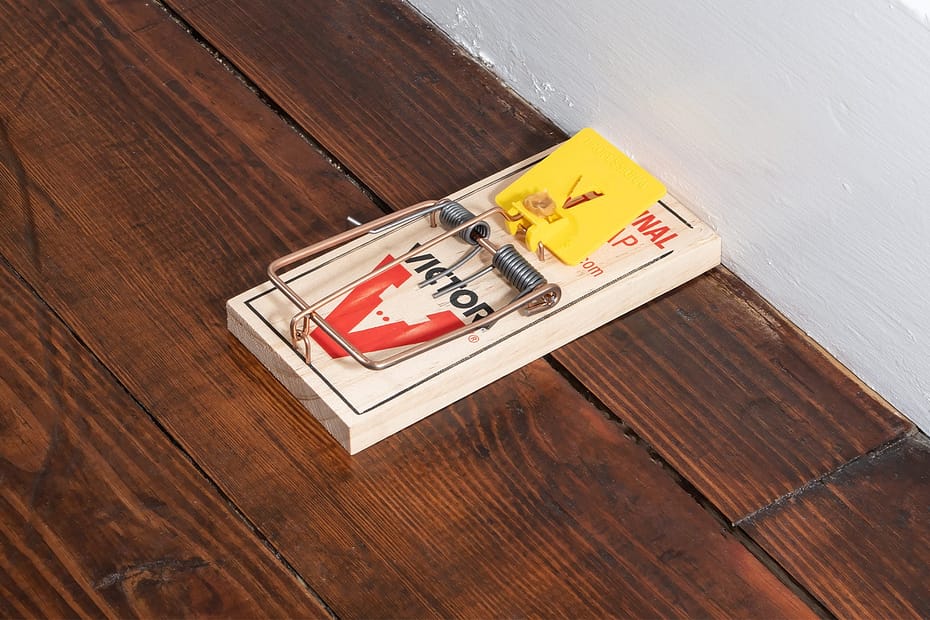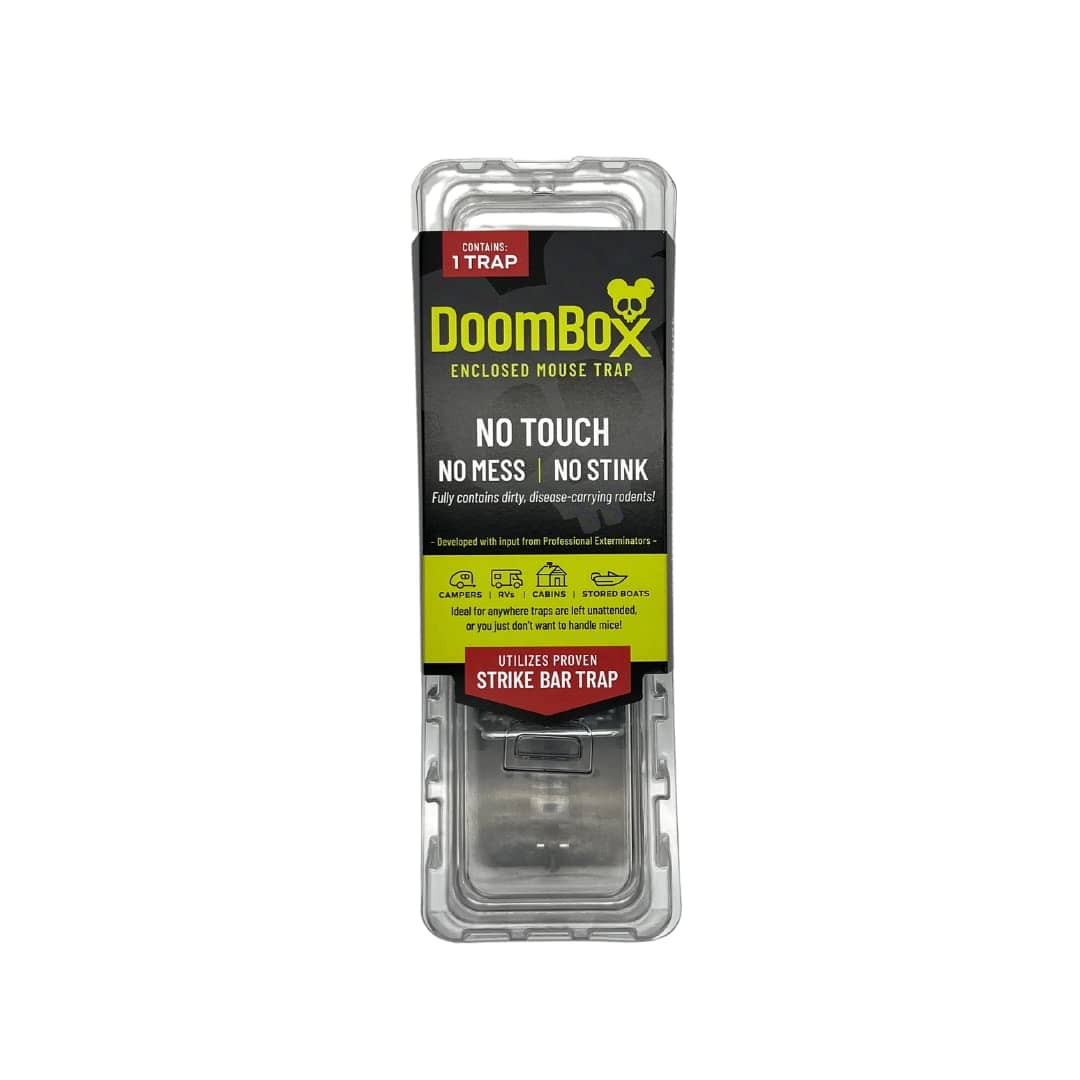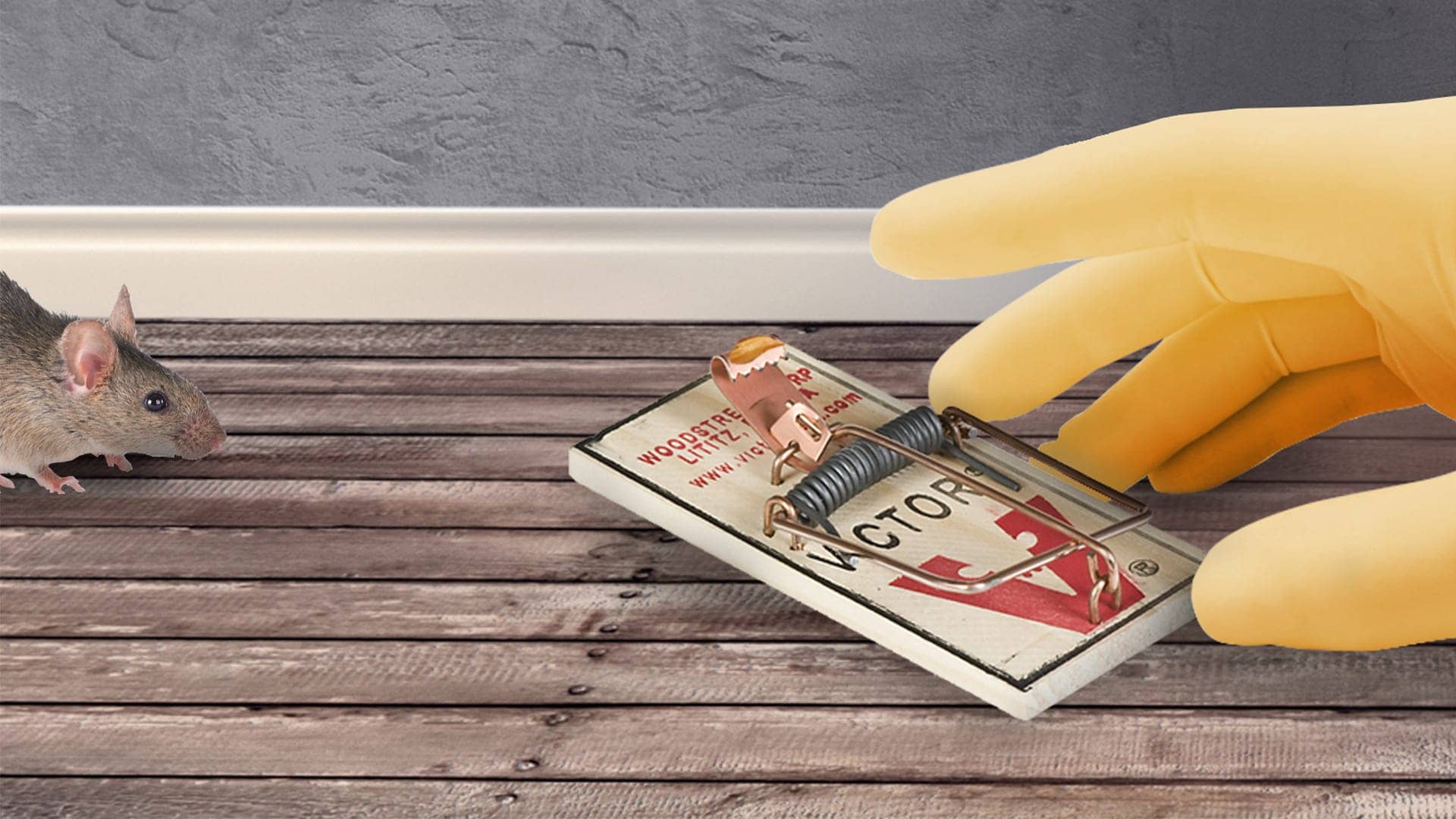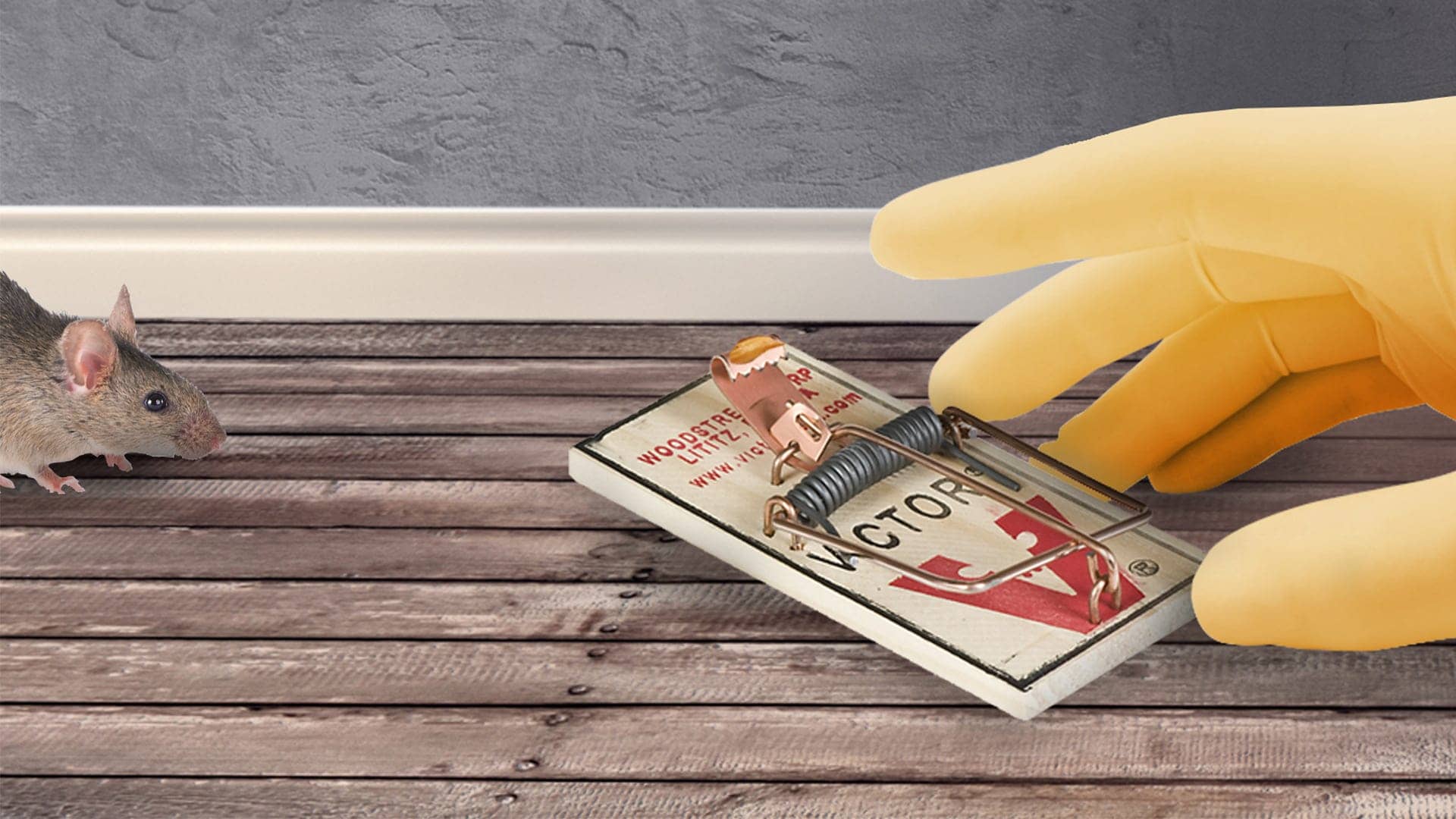Proper mouse trap placement in commercial buildings is crucial for effective pest control. We will discuss the importance of strategic trap placement and provide tips for ensuring maximum efficiency in your mouse trapping efforts.
Mice infestations can pose serious health and safety risks in commercial buildings. Proper trap placement is vital as it increases the likelihood of catching mice quickly and efficiently. By strategically placing traps near areas where mice are likely to travel, such as along walls, near food sources, and in dark corners, you can significantly improve your chances of successful trapping.
In addition, it’s important to regularly inspect and reset traps to ensure continued effectiveness. By following these guidelines, you can effectively control mouse populations in commercial buildings and create a safe and healthy environment for staff and customers.
Understanding The Behavior Of Mice In Commercial Buildings
Understanding the behavior of mice in commercial buildings is crucial for effective mouse trap placement. By strategically positioning traps in high-traffic areas, near food sources, and along walls, business owners can effectively control mouse populations and protect their premises from damage and contamination.
Mice can be a major nuisance in commercial buildings, causing damage to property and creating an unsanitary environment. To effectively address this problem, it is crucial to understand their behavior and habits. This will enable you to identify common entry points, assess potential risk areas for infestation, and recognize signs of mouse activity in commercial buildings.
Identifying Common Mouse Entry Points
Mice are agile creatures that can squeeze through small openings, often as small as a quarter of an inch. Therefore, it is essential to identify the common entry points through which mice can gain access to commercial buildings:
- Cracks and gaps in walls and foundations: Mice can easily enter through tiny openings in the exterior of the building, such as cracks in the walls or gaps in the foundation.
- Utility pipes and wiring: Mice can use utility pipes and electrical wiring as pathways to enter commercial buildings.
- Open doors and windows: Doors and windows left open or with insufficient screens provide an easy entry point for mice.
- Ventilation systems: Mice may find their way into commercial buildings through the ventilation systems, especially if they are not adequately sealed.
Assessing The Potential Risk Areas For Infestation
To effectively control mice infestation in commercial buildings, it is crucial to assess the potential risk areas where they are likely to thrive:
- Storage areas: Mice are attracted to storage areas, where they can find food, nesting materials, and shelter.
- Kitchens and break rooms: The presence of food sources makes kitchens and break rooms prime locations for mouse infestation.
- Basements and crawl spaces: Dark and undisturbed areas like basements and crawl spaces are ideal hiding spots for mice.
- Garbage areas: Mice will scavenge for food in garbage areas, so ensuring proper waste management is essential.
Recognizing Signs Of Mice Activity In Commercial Buildings
Early detection of mouse activity is crucial in preventing a full-blown infestation. Keep an eye out for these telltale signs that indicate the presence of mice in your commercial building:
- Droppings: Mice leave behind small, pellet-like droppings, especially in areas near their nests or along their regular pathways.
- Gnaw marks: Mice constantly gnaw on objects to keep their teeth sharp. Look for gnaw marks on furniture, cardboard, and other chewable materials.
- Footprints: Mice typically leave behind small footprints or tail marks in dusty or muddy areas.
- Squeaking or scratching noises: Mice often make audible noises when they are active, especially at night when the building is quiet.
- Nests and shredded materials: Mice create nests using shredded materials like paper, fabric, and insulation. Check for hidden nests in secluded areas.
By understanding the behavior of mice in commercial buildings, you can effectively strategize their control and implement proper mouse trap placement. Remember to seal entry points, address potential risk areas, and promptly respond to signs of mouse activity to ensure a rodent-free environment in your commercial building.
Strategic Placement Of Mouse Traps
Strategically place mouse traps to effectively control rodents in commercial buildings. Proper placement plays a crucial role in trapping mice and preventing infestations. Ensure traps are positioned in high-traffic areas and near potential entry points for optimal results.
Ideal Locations For Mouse Trap Placement In Commercial Buildings:
- Near food storage areas or kitchens: Mice are often attracted to these areas due to the availability of food.
- Along walls and baseboards: Mice tend to run alongside walls, making this an effective placement spot.
- Near entry points: Placing traps near doors and windows can help catch mice before they enter the building.
- In utility rooms: These areas often have hidden corners and potential entry points for mice.
Considerations For Different Types Of Commercial Spaces (Restaurants, Offices, Warehouses, Etc.):
Restaurants:
- Near trash bins and dumpsters: Mice are drawn to the abundance of food in these areas.
- In storage rooms: Regularly check and place traps to prevent mice from contaminating food supplies.
- Behind kitchen equipment: Mice can hide behind ovens, refrigerators, and other appliances, so placing traps in these areas can be effective.
Offices:
- Near break areas: Mice may be attracted to food or crumbs left behind by employees.
- In storage rooms or supply closets: Mice can find nesting materials in these areas, so trap placement is crucial to prevent an infestation.
- Along walls in cubicle areas: Place traps alongside walls as mice often follow these routes.
Warehouses:
- Near loading docks and entry points: Mice can enter through gaps, so placing traps in these areas can catch them before they spread.
- In storage areas: Regularly monitor and place traps to prevent mice from damaging products or contaminating inventory.
- Around pallets and shelving: Mice can often hide in these areas, so placing traps nearby can help control the population.
Ensuring Proper Spacing And Coverage Of Mouse Traps:
- Space traps every 10-15 feet: This allows for adequate coverage without overcrowding the area.
- Place multiple traps in each location: It increases the chances of capturing more mice.
- Place traps out of reach of children and pets: Ensure safety by strategically placing traps where they cannot be tampered with.
- Regularly monitor and reposition traps: Move traps to new locations if no activity is detected after several days.
Remember, strategic placement of mouse traps is crucial in commercial buildings to effectively control and prevent mouse infestations. Regular monitoring and proper maintenance are essential for successful rodent management.
Choosing The Right Type Of Mouse Trap
Choosing the right type and placement of mouse traps is crucial for effectively controlling mouse infestations in commercial buildings. Proper placement ensures that the traps are strategically positioned in areas where mice are most likely to travel, increasing the likelihood of capturing the pests and minimizing health and safety risks.
Overview Of Different Types Of Mouse Traps Available:
In commercial buildings, choosing the right type of mouse trap is essential for effective pest control. There are several options to consider, each with its own advantages and disadvantages. Here is an overview of the different types of mouse traps available:
- Snap traps:
- Classic and commonly used type of mouse trap.
- Consists of a spring-loaded bar that snaps shut when triggered by a mouse.
- Quick and efficient in capturing mice.
- Requires manual disposal of the caught mouse.
- Glue traps:
- Sticky adhesive surface that traps mice upon contact.
- Easy to use and dispose of.
- Considered more humane as it does not kill the mouse instantly.
- Mice may struggle and suffer before dying.
- Electronic traps:
- Battery-powered traps that electrocute mice upon entering.
- Quick and humane way of eliminating mice.
- Requires minimal handling, as the trap automatically disposes of the mouse.
- Can be more expensive compared to other types of traps.
- Live traps:
- Specially designed to catch mice alive.
- Often used by those seeking a more humane approach to pest control.
- Requires regular monitoring and release of trapped mice into suitable habitats.
- Less effective for large-scale infestations.
Selecting The Most Effective Mouse Traps For Commercial Settings:
When it comes to selecting the most effective mouse traps for commercial settings, there are a few factors to consider. These include:
- Level of infestation:
- Determine the severity of the mouse infestation to choose the appropriate trap.
- Snap traps and electronic traps are recommended for moderate to high infestations, as they are more efficient in capturing and eliminating a larger number of mice.
- Glue traps and live traps can be effective for lower-level infestations.
- Environment and safety considerations:
- Consider the location and layout of the commercial building.
- Snap traps and electronic traps are safer options in areas where there is a risk of unintended human or pet contact.
- Glue traps may not be suitable in areas with high foot traffic, as they can stick to unintended targets.
- Maintenance and disposal:
- Assess the ease of use and maintenance of different trap types.
- Snap traps and electronic traps are easy to dispose of and require minimal maintenance.
- Glue traps may require more frequent replacement and can be messy to handle.
Balancing Humane Options With Effective Pest Control Measures:
While it is important to prioritize effective pest control in commercial settings, there is also a need to balance humane options. Consider the following:
- Humanely disposing of trapped mice:
- When using snap traps or electronic traps, ensure quick and humane disposal of the captured mice.
- Minimize suffering and avoid prolonged exposure to stressors.
- Implementing preventive measures:
- Focus on eliminating favorable conditions for mice to reduce infestation risks.
- Seal entry points, maintain cleanliness, and store food properly.
- Seeking professional advice:
- If unsure about the most suitable mouse trap for commercial buildings, consult a pest control professional.
- They can assess the situation, recommend appropriate traps, and provide effective pest management strategies.
Remember, finding the right mouse trap for commercial buildings requires careful consideration of the severity of infestation, safety concerns, and the balance between effective pest control and humane practices.
Tips For Effective Mouse Trap Placement
Proper mouse trap placement is essential in commercial buildings to effectively control mouse infestations. Follow these expert tips to ensure efficient placement and increase the chances of catching mice in strategic areas throughout the premises.
Placing Mouse Traps Near Food And Water Sources:
- When it comes to placing mouse traps in commercial buildings, it is crucial to consider the proximity to food and water sources. This will increase the chances of catching mice and eliminating them effectively.
- Placing mouse traps near food and water sources ensures that the traps are in areas where mice are likely to be active.
- Take note of areas such as kitchens, break rooms, pantries, or areas where food is stored. Also, check for leaking pipes or areas with standing water, as mice are attracted to moisture.
- By strategically placing mouse traps near these sources, you can significantly enhance the chances of trapping mice and preventing further infestation.
Utilizing Mouse Trap Bait To Attract Mice:
- If you want to increase the effectiveness of mouse trap placement, using bait can be highly beneficial. Here are some tips for utilizing mouse trap bait to attract mice:
- Peanut butter: This sticky and aromatic bait is highly attractive to mice. Apply a small amount on the trap to entice them.
- Cheese: Despite popular belief, while mice may be attracted to cheese, it is not their favorite food. However, you can still try using it as bait along with other options.
- Chocolate: The sweet and irresistible scent of chocolate can work wonders in attracting mice to the trap.
- Nuts and seeds: Mice are naturally drawn to seeds and nuts due to their high fat content. Using these as bait can be effective in luring them into the trap.
- Pet food: If you have noticed a mouse problem near pet food storage areas, using a small amount of pet food as bait can be an effective strategy.
Avoiding Common Mistakes In Mouse Trap Placement:
- To ensure the success of your mouse trapping efforts, it is essential to avoid common mistakes in mouse trap placement. Here are some tips to help you avoid these pitfalls:
- Insufficient traps: Make sure to place an adequate number of traps in areas with mouse activity. A single trap may not be enough to catch all the existing mice.
- Incorrect trap placement: Avoid placing traps in areas where they may be easily disturbed or where children or pets have access. Place the traps against walls or in the path of known mouse activity.
- Lack of cleanliness: Keep the area around the traps clean and free from potential distractions or competing food sources.
- Failure to check traps regularly: Regularly inspect the traps to remove any trapped mice promptly. This will prevent odor issues and allow you to reset the traps if necessary.
- Ignoring preventive measures: While trapping mice is important, it’s equally important to address the root cause. Take measures to seal entry points, remove food and water sources, and maintain cleanliness to prevent future infestations.
Remember, effective mouse trap placement involves considering the proximity to food and water sources, utilizing bait to attract mice, and avoiding common mistakes. By following these tips, you can increase the chances of successfully trapping mice and maintaining a rodent-free commercial building.
Maintaining And Monitoring Mouse Traps
Proper placement and regular monitoring of mouse traps are essential in commercial buildings to effectively control rodent infestations. By strategically positioning traps in high-risk areas and regularly checking and resetting them, businesses can ensure a pest-free environment without compromising on customer safety and satisfaction.
Mouse infestations can be a major nuisance in commercial buildings, compromising hygiene standards and potentially damaging the reputation of your business. Proper placement and maintenance of mouse traps are crucial for effective rodent control. In this section, we will explore the importance of regular inspection and maintenance of mouse traps, along with the significance of tracking and recording mouse activity.
We will also address potential issues with mouse trap placement to ensure maximum trapping efficiency.
Regular Inspection And Maintenance Of Mouse Traps:
- Conduct regular visual inspections of mouse traps to check for signs of mouse activity, such as droppings, footprints, or chewed materials.
- Replace any traps that show signs of wear or damage, as compromised traps are less effective at capturing mice.
- Clean and sanitize mouse traps regularly to prevent the build-up of odors that may discourage mice from approaching the traps.
- Ensure mouse traps are properly baited with suitable attractants, such as peanut butter or cheese, to entice mice to the trap.
Tracking And Recording Mouse Activity:
- Keep a logbook or digital record of mouse trap placements and captures to monitor the effectiveness of your trapping strategy.
- Record the date, location, and quantity of captured mice for each trap to identify patterns and high-risk areas.
- Analyze the recorded data to gain insights into mouse behavior and adjust trap placement accordingly.
Identifying And Addressing Potential Issues With Mouse Trap Placement:
- Assess the building’s layout and identify areas where mice are likely to enter or travel through, such as gaps in walls, utility lines, or ventilation systems.
- Place mouse traps along the paths commonly used by mice, such as baseboards, behind equipment, or near sources of food and water.
- Pay attention to corners, tight spaces, and other confined areas where mice tend to seek shelter.
- Regularly evaluate the efficiency of trap placement by monitoring capture rates and making adjustments as needed.
Remember, maintaining and monitoring mouse traps in commercial buildings is an ongoing process. By conducting regular inspections, tracking mouse activity, and addressing any issues with trap placement, you can ensure a pest-free environment and safeguard your business’s reputation.

Credit: collections.vam.ac.uk
Frequently Asked Questions On Proper Mouse Trap Placement In Commercial Buildings
Where Should An Effective Mouse Trap Be Placed?
An effective mouse trap should be placed in areas where mice are commonly seen or suspected.
How Do I Get Rid Of Mice In My Commercial Building?
To get rid of mice in your commercial building, take these steps: 1. Inspect your building for any holes, cracks, or entry points where mice can enter. 2. Seal all potential entry points using steel wool, caulk, or wire mesh. 3.
Eliminate sources of food and water by cleaning up spills, storing food in sealed containers, and removing trash regularly. 4. Set up traps or use bait stations to catch and remove mice. Place them in areas where mice are active.
5. Regularly check and empty traps, and dispose of captured mice properly to prevent further infestation. 6. Consider hiring a professional pest control service if the infestation persists or if you need further assistance.
Should Mouse Traps Be Parallel Or Perpendicular?
Mouse traps should be placed perpendicular to walls or objects for better efficacy.
What Is The Maximum Space Between The Placement Of Traps When Dealing With A Severe Mouse Infestation?
The maximum space between traps in severe mouse infestations should be minimized for better catch.
Conclusion
To effectively control mice in commercial buildings, proper mouse trap placement is crucial. The strategic positioning of traps ensures that mice are targeted where they are most active, increasing the chances of success. By placing traps along walls and near entry points, such as doors and windows, you create a barrier that intercepts mice before they venture further into the building.
Additionally, positioning traps near areas where mice are likely to find food and water sources, such as kitchens or storage rooms, can further enhance their effectiveness. Regularly inspect and maintain the traps to ensure they remain functional and clean. Remember, thorough monitoring and documentation of trap placements and catch rates will help identify patterns and areas that require special attention.
With a well-planned and executed mouse trap placement strategy, you can effectively control mice and safeguard your commercial building from their nuisance and potential damage.




